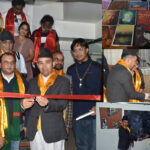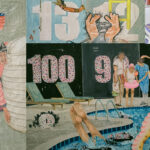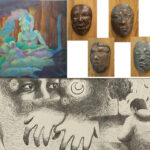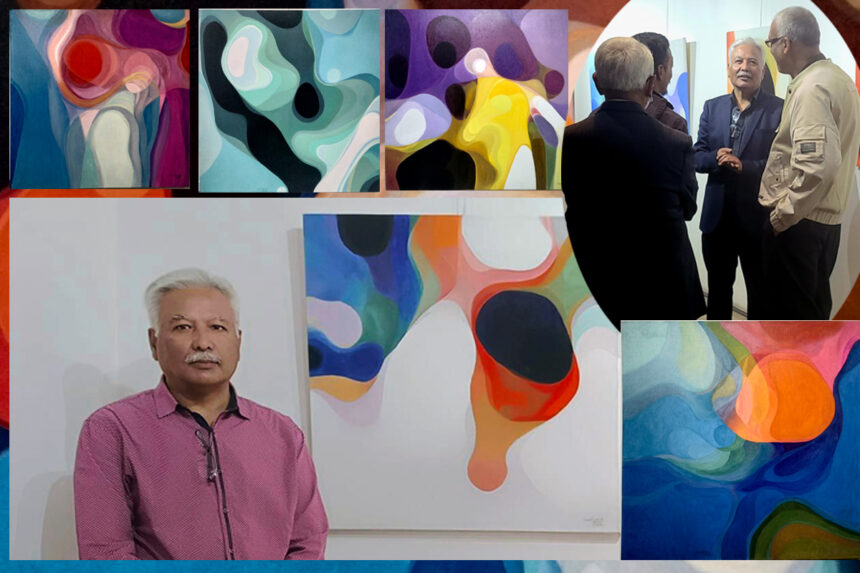Artists tend to have different perceptions of the things happening around them. At times, they limit their expressions within the canvas and yet in other times, they seem to explore various themes through experimentation and logic. Mr. Sunil Ranjit is not a new name in the field of art as he was one of the founder members of Srijana Art Gallery and now a faculty of Srijana College of Fine Arts. He is exhibiting his art works at the gallery of Dalai-La boutique hotel, Thamel, from 10th to 30th of March, 2023.

Talking about his long journey as an artist and an art teacher, he explains, ‘I have always tried to emphasize on the symmetry and knowledge of colors to my students, as without this they would not be able to achieve their goals,’ Mr. Ranjit, sporting white hair and a white mustache, beams as he and the Khojpatra team discuss the fundamentals of color theory and object placement in a painting in such a way that the audience’s eyes are drawn into the work itself.
For a long time, there has always been a debate to whether the aesthetic value of art could be defined by the symmetrical shapes and the choice of colors or the idea itself is more important and mandatory subject. Both their arguments seem to be valid as long as the idea and destination is clear. Curator at the Dalai-La, Bidhata K.C. being a visual artist herself, jumps into the conversation with a different approach and says, “Art has always been a subject of aesthetics, the senior artist tend to follow such rules, but the artists from younger generations, like experimenting with their ideas and aesthetics. It is not that we totally discard the rules, but while experimenting some of the rules need to be broken. There are still some artists who could have done better had they followed the aesthetics of colors.”

Ranjit is an artist with a unique method of operation. When discussing his artistic method, he asserts, “In order to comprehend and assimilate my art work, one need only close their eyes for a short while and see the patches of darkness formed inside their head. In the same vein, seeing light patches with closed eyes while sitting in the sun has a calming impact on the mind. The main subjects in my paintings are objects, spaces, and the colors. I would consider my work to be successful if someone looked at my colors and smiled.”
Creative approach has no boundaries. At times, artists create the objects, people, kings, deities, scenic landscapes etc. that they desire in the canvas. But his style varies here, he opines that all these things could also be represented in a more subtle way. Thus he tries to limit his expression to his vision. At times, the colors, shapes and bubbles are all that is seen in his canvas. The viewer would grasp his subject matter and yet could also imagine many things that are not there. He considers his way of creativity to the meditative pleasure in the idea of infinity.

Just like the Shakespearean poem, ‘As you like it’, he compares his work in canvas as a performance done in the stage. While working in canvas, he believes that he experiences, interrogates, argues, holds dialogue and plays with the colors as if it responds with him. At times he believes that all the mathematical calculations need to be done in the canvas in order to make it more efficient and effective.
The artist, Mr. Ranjit has a long career as a professor as well as an artist. In a different discussion regarding how he sets the price of his artwork, he replies, “I generally look for artists who are from abroad and have dedicated the same amount of time and energy in the field of art. Thus, when I feel that the price is okay in Nepali market, I set my price.”
The exhibition truly marks as a contemplation of colors of veteran artist Mr. Ranjit. He gets more than happy to talk about his art-works with his visitors. This show is a ‘must attend to’ to many viewers and aspiring artists of Nepal.








Leave A Comment